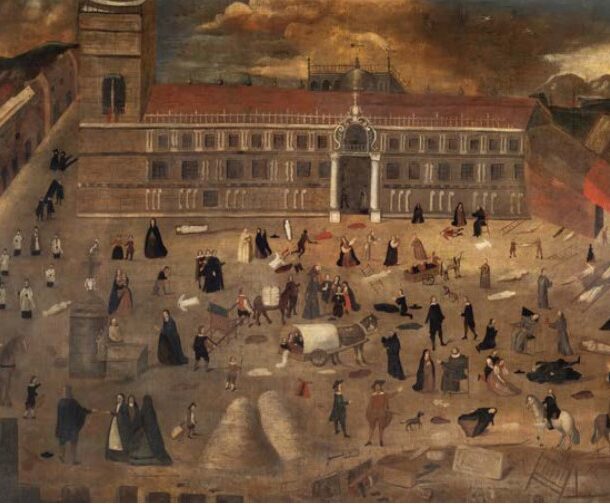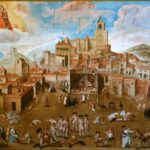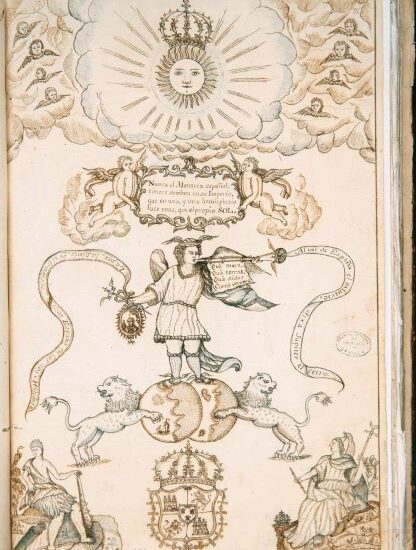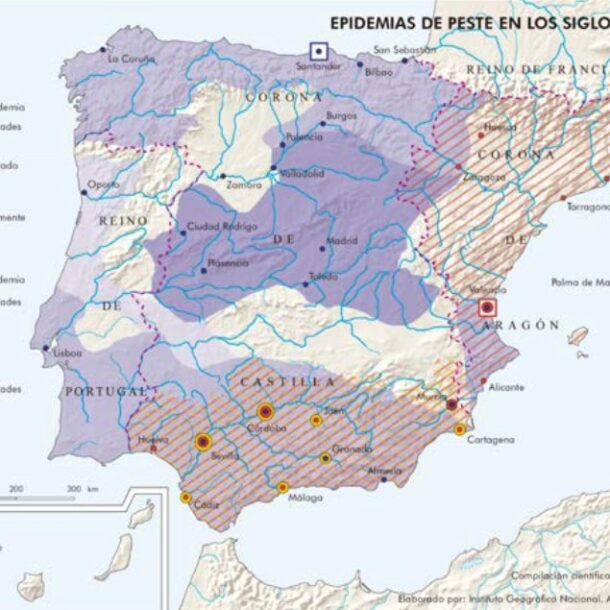
The plague, one of the greatest threats to public health, struck Antequera in 1679. After the strong impact it had on the city of Seville, reflected in an anonymous painting dated 1649, the city of Malaga followed the same fate. The painting, an anonymous oil painting dated 1723, depicts the religious nature of these episodes: the Virgin of the Rosary appears in the upper left-hand band as part of the religious programme. On the right is a rainbow, symbol of God’s mercy, above a pious procession. Below, the city, under a rain of arrows representing the plague, the action unfolds. The dead are piled into mass graves while objects and personal belongings are burnt. The living are assisted by doctors and surgeons, who perform precarious medicinal work for healing (bloodletting, draining buboes, gauzing with ointments or cauterising wounds with hot irons). In short, the author depicted the tragedy of the plague, its social implications and its connection with the religious mentality.
Collection: Images
Project: 3. Rural world and urban world in the formation of the European identity., 4. Family, daily life and social inequality in Europe.
Chronology: XVII
Scope: Secondary Education, Baccalaureate, University
Resource type: Image
Format: Painting
Source: Olmedo Granados, F. y García León, G. J. (2021). Andalucía y la cartografía histórica de las pandemias. Sevilla: Fundación Pública Andaluza Centro de Estudios Andaluces, p. 47.
Language: Spanish
Date: 1723
Owner: Pablo Ballesta Fernández (Modernalia)
Copyright: ©Fundación Pública Andaluza Centro de Estudios Andaluces ©Fernando Olmedo Granados ©Francisco Javier García León
Abstract: The resource shows the representation of the plague in Antequera in 1679 according to the religious mentality of the time
Image
Tags







